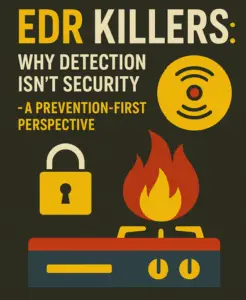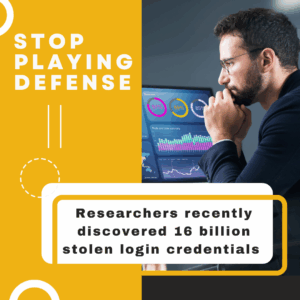At a recent event, multiple companies asked if you really need to protect air-gapped technology, and, if so, how to do it. It’s easy to assume that if a system is air-gapped or not connected to the network, it’s inherently safe from cyber threats. However, this is a dangerous misconception. Even in isolation, no system is entirely immune from potential security breaches. Securing everything, even air-gapped systems is crucial.
Air-Gapped Infiltration
- The Illusion of Isolation: An air-gapped system, by definition, is physically disconnected from external networks, making direct cyber-attacks more difficult (not impossible). Historically, air-gapping was considered a secure measure for highly sensitive systems. However, modern cyber threats have evolved to encompass a range of techniques that can compromise these isolated environments.
- Internal Threats: Air-gapped systems are not invulnerable to internal threats. Insider threats, whether malicious or accidental, can still jeopardize the security of unconnected systems. Careless handling of data, unauthorized access, or malware introduced through external media can all introduce risks.
- Physical Access Vulnerabilities: While air-gapped systems are not susceptible to remote attacks, they remain susceptible to physical access vulnerabilities. Unauthorized personnel or attackers who gain physical access to the system can potentially tamper with its components or implant malicious hardware.
- Data Exfiltration Techniques: Sophisticated attack methods, such as “air-gap hopping,” utilize various tactics to exfiltrate data from air-gapped systems. Techniques like acoustic attacks, electromagnetic radiation monitoring, and even exploiting supply chains can enable attackers to breach seemingly isolated systems.
Protecting Unconnected Systems
To ensure comprehensive protection for all assets, it’s vital to adopt a holistic security approach that covers air-gapped and connected systems alike. Here are some essential steps to secure unconnected systems:
- Regular Security Audits: Perform periodic security audits to identify vulnerabilities and weaknesses in your air-gapped infrastructure. Assess physical security measures, access controls, and data handling protocols to ensure compliance and robustness.
- Isolation from External Media: Prevent the introduction of malware or unauthorized data by strictly controlling external media access. Utilize secure data transfer methods like write-once-read-many (WORM) media for data exchange between isolated systems. (WORM) allows data to be written once to a storage medium, then prevents any further modifications, alterations, or deletions. Once the data is written and the WORM protection is activated, it becomes read-only, ensuring that the information remains unchanged and secure from any accidental or malicious alterations.
- Implement Strong Access Controls: Enforce strong access controls, including multi-factor authentication, for all personnel who have access to the air-gapped system. Limit privileges to only those necessary for their specific roles.
- Educate and Train Personnel: Human error remains a significant cause of security breaches. Regularly educate and train employees about potential security risks and best practices for safeguarding sensitive information.
- Physical Security Measures: Strengthen physical security by restricting access to the location of air-gapped systems. Use surveillance, alarms, and access logs to monitor and prevent unauthorized entry.
- Air-Gap Maintenance: Regularly update and patch air-gapped systems, including firmware and software, to fix known vulnerabilities and weaknesses.
- Data Encryption: Encrypt sensitive data, both at rest and during transmission, to protect it even if unauthorized access occurs.
- Incident Response Plan: Develop and test a comprehensive incident response plan specific to air-gapped systems. This will ensure a swift and coordinated response in the event of a security breach.
Security for All
In conclusion, security is not just a concern for networked systems. It is vital for every aspect of an organization’s infrastructure. Air-gapped systems may offer a degree of isolation, but they are not impervious to cyber threats. By adopting a comprehensive and proactive approach to cybersecurity, including measures for both connected and unconnected systems, we can better protect our sensitive data and assets from malicious actors. Remember, security is for all, not just some.



